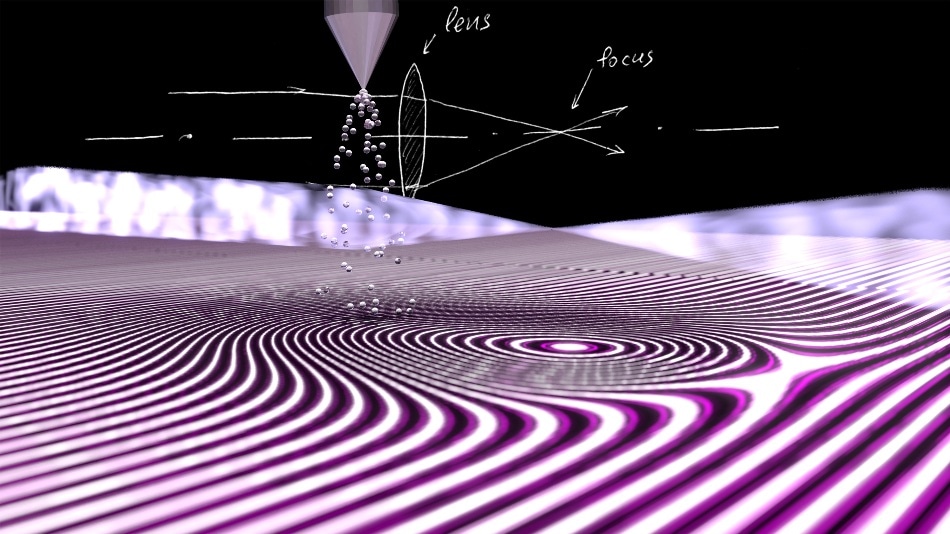Nov 29 2018
Researchers at the Max Born Institute (MBI) have created the first refractive lens with the ability to focus extreme ultraviolet (XUV) beams. Rather than using a glass lens, which is non-transparent in the XUV region, the scientists have exhibited a lens formed by a jet of atoms.
 Focusing of an XUV beam by a jet of atoms that is used as a lens. (Image credit: Oleg Kornilov/Lorenz Drescher)
Focusing of an XUV beam by a jet of atoms that is used as a lens. (Image credit: Oleg Kornilov/Lorenz Drescher)
The outcomes of the study, which offer innovative opportunities for the imaging of biological samples on the shortest timescales, have been reported in Nature.
A tree trunk appears bent when it is partially submerged in water. For hundreds of years, people have known that this is due to refraction, that is, the light changes its direction while traveling from one medium (water) to another (air) at an angle. Refraction is also the basic physical principle behind lenses, which have an essential role in day-to-day life: They are a part of the human eye, they are used as glasses, as camera objectives, as contact lenses, and for controlling laser beams.
The discovery of new regions of the electromagnetic spectrum, like X-ray and UV radiation, has led to the development of refractive lenses that are particularly adapted to these spectral regions. However, electromagnetic radiation in the XUV region is special to a certain extent. Although it occupies the wavelength range between the X-ray and UV domains, in contrast to these two types of radiation, it can travel only in strongly rarefied gases or vacuum.
Currently, XUV beams are extensively used in semiconductor lithography and in fundamental research to perceive and control the structure and dynamics of matter. They allow the shortest human-made light pulses to be generated for attosecond durations (an attosecond is one-billionth of a billionth of 1 second). However, despite the large number of XUV sources and applications, XUV lenses have never existed to date. This is because XUV radiation is strongly absorbed by any liquid or solid material and simply cannot pass through traditional lenses.
A group of MBI scientists has come up with a different strategy to focus XUV beams: Instead of a glass lens, they used a lens formed by a jet of atoms of a noble gas, helium. Not only does this lens benefit from the high helium transmission in the XUV spectral range, it can also be precisely controlled by varying the density of the gas in the jet. This is significant for tuning the focal length and minimizing the spot sizes of the focused XUV beams.
When compared to curved mirrors that are usually used to focus XUV radiation, these gaseous refractive lenses are beneficial in several ways: A “new” lens is continually generated using the flow of atoms in the jet, suggesting that issues with damages are prevented. Moreover, a gas lens leads to practically no loss of XUV radiation than a typical mirror.
This is a major improvement, because the generation of XUV beams is complex and often very expensive.
Dr. Bernd Schütte, Scientist and Study Corresponding Author, MBI.
As part of the study, the team has further shown that an atomic jet has the ability to function like a prism breaking the XUV radiation into its constituent spectral components. This can be said to be analogous to viewing a rainbow, which is formed when the sunlight is broken into its spectral colors by water droplets, except for the fact that the “colors” of the XUV light are invisible to the human eye.
With the development of the gas-phase lenses and prisms in the XUV region, it would be feasible to transfer optical methods, which are based on refraction and are extensively used in the visible and infrared part of the electromagnetic spectrum, to the XUV domain. For instance, gas lenses could be used to develop an XUV microscope or to focus XUV beams to nanometer spot sizes. In the future, this may be used, for example, to observe structural variations of biomolecules on the shortest timescales.